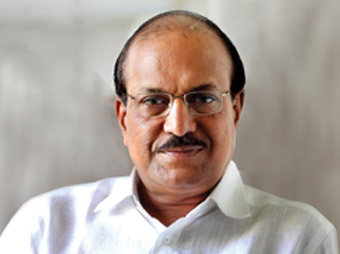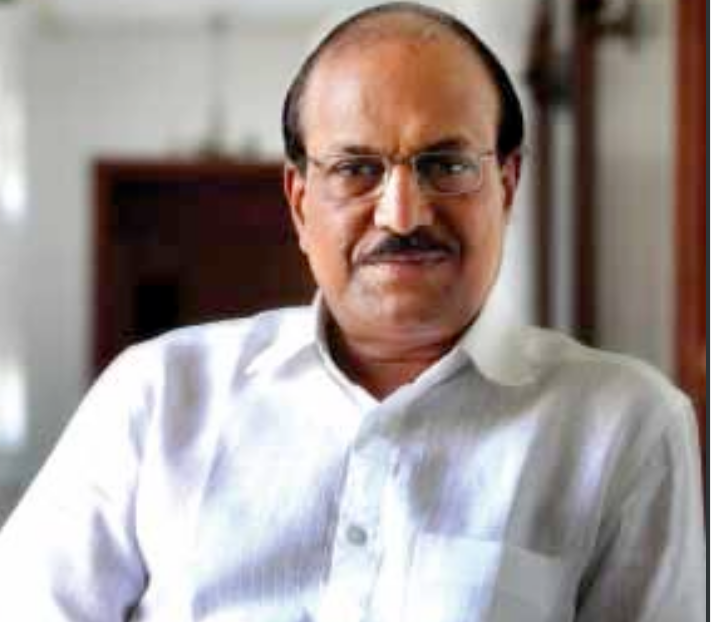
P K Kunhalikutty
Hon’ble Minister for Industries and Information Technology, Government of Kerala;
Chairman, Kerala State Information Technology Mission (KSITM)
“Kerala IT Vision 2020 is focussed on cornering 5 percent of India’s IT market,and creating 5 lakh new jobs in IT,” says P K Kunhalikutty, Hon’ble Minister forIndustries and Information Technology, Government of Kerala

The Kerala IT industry had a humble beginning in the early nineties with the establishment of technopark at Thiruvananthapuram, over 20 years back. That was a unique experiment and the first of its kind in the country. It may be remembered that this was before India opened up. The setting up of Technopark opened up a completely new paradigm in industrial culture and the opportunities for the educated young people. Greatly inspired by the success of Technopark, Infopark at Kochi was established in 2003,which was also proved to be a great success. These successes gave us the confidence to spread the wings further north with the establishment of Cyber Park at Kozhikode. These three Parks act as the hubs of IT development of the State. Today, we have in Kerala around 600 small, medium and large IT firms employing over 80,000 professionals directly and nearly three times that number indirectly. Kerala is blessed with high quality educated human resources that is needed for IT/ITES industry.
Kerala’s achievements in education, healthcare, religious tolerance, peaceful co – existence of all classes and communities makes it further suitable for substantial growth of IT/ITES industry. The highly secular and cosmopolitan atmosphere in Kerala combined with an excellent law and order situation attracts the professionals as a place to settle. The low cost of living compared to the metros and the facilities similar to those being available makes the State a high value for money to reside and work. Kerala IT Vision 2020 is set to focussed on cornering 5 percent of India’s IT market, which requires development of around 50 Million Sq.ft. of built up area. This would provide 5 lakhs new job opportunities. The three major IT Parks in Kerala together with SmartCity have about 1000 acres of land that needs to be developed, along with a few forth- coming Private IT Parks to fulfil the vision. The Government, in its new IT policy has catered to this requirement of the sector by allowing private IT parks and also bringing the concept of IT townships wherein all facilities are provided in the vicinity of the Parks.

In Kerala, the state government has taken lots of new initiatives in the e-Governance space. Please share with us your vision for further improving the governance structure through ICT?
The Moto of Government of Kerala, under the leadership of Oomman Chandy has been “Transparency, Efficiency, Responsiveness and Accountability to people.” Keeping in line with the same we have been formulating an e-governance strategy for the state which would enable the convergence of the various governance initiatives in the state to an integrated, opti- mised and unified framework. Essentially this means a citizen focussed approach to government services.
Monitoring System, which permits Citizens to lodge their grievances related to any department/sector in Government of Kerala. The grievance can be forwarded to the concerned authorities for needful action. What kind of response is this system seeing from the citizens in the state?
Kerala has introduced IT in Government-citizen interaction, way ahead of many other states in India and the growth or absorption has been successful. We have developed a sustainable model of IT adoption in governance initially by introducing the usage or application in individual departments and allowing them to make their own success stories. Today the e-governance scene of Kerala has Web based services, ICT based Call Centres, mobile governance and the technological advances are fuelling the Government citizen relations further. The transparency measures adopted by this government have been its single differentiating factor from any Government. The public is free to lodge their complains through all channels and this facility is available through the Citizen Call Centres also . The complaint is then followed up to a logical conclusion. The IDEAS software deployed by the IT department within Secretariat helps the citizen as well as the employees to track the status of files in the Secretariat, thus increasing transparency. The citizens have a confidence that they will be heard and they can also monitor the progress of their grievance or application.
At times common citizens are unable to take full advantage of e-Governance systems as they have not been adequately informed. What steps are you taking to popularise the e-Governance systems?
Considerable strategic investments have been made in the e-Governance infrastructure front like the first State Data Centre in the country, Kerala State Wide Area Network for connectivity, and Akshaya, the Common Service Centres which act to bridge the “digital divide” by successfully carrying out e-literacy campaign for the common man. We are now in the process of consolidation and integration of the core
IT infrastructure with the applications developed by different departments to provide e-enabled Government to Citizen, Citizen to Government and Business to Consumer services to all the citizens of the State.
Along with IT, you are also looking after the portfolios of Mining and Geology, Hand- looms and Textiles. What kind of ICT initiatives have you brought in the Mining and Geology, Handlooms and Textiles sectors? Tell us about new e-Governance ideas that you might be planning to launch in these sectors.
An ICT application in all sectors is a focus of the Government policy and these Departments have already embarked upon their IT initiatives in a large way. This varies from information dissemination websites to interactive portals to transactions across the web. Government of Kerala have decided to introduce electronic pass system (e-pass) in the mining sector for transportation of minerals. The system /software developed have the features of computer network- ing and GPRS. Introduction of this system will stop the illegal mining and transportation of minerals in the State.
Government have introduced e-procurement and e-payment systems in Government Departments and Public Sector undertakings under the Industries Department.
These days there is lot of talk about anti-national and antisocial content being put on blogs and social networks? In your opinion should government have a monitoring mechanism for the websites? There are so many websites and blogs, so is it possible for any government agency to monitor all of them?
The web is a large space and regulating the web is near to impossible with the advent of social networking sites. The possibility here is to create awareness among people about cyber laws and the impacts of their actions. Many a times the youngsters who upload content or share it merely out of curiosity or just for the sake of fun. This cannot be regulated by law or by policing. Awareness of better uses of the web and the need to maintain a clean and sober web profile etc need to be educated to the youth. They should also be made aware that today you can be traced out to your system in case of a requirement and that even employer’s look though web profiles of their prospective employees before recruitment. These factors will make people responsible in these aspects and I see self-restriction is the only way. Having said that when things go beyond certain limits then law would take its own course.
Be a part of Elets Collaborative Initiatives. Join Us for Upcoming Events and explore business opportunities. Like us on Facebook , connect with us on LinkedIn and follow us on Twitter, Instagram.












